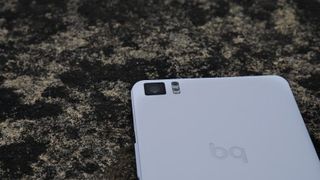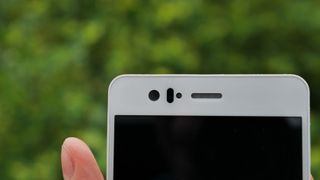Why you can trust TechRadar
The screen is an area where BQ Aquaris M5 excels. At 440ppi it is sufficiently pixel-dense to please all but the most anal of pixel-peepers. Watching videos, reading on the go, viewing images and the rest are all a highly enjoyable experience.
The world may be shifting towards 4K and virtual reality, but for the average person the full HD resolution is a ceiling that never needs to be broken.
This focus on the little things and user experience have led to a few other nice touches, such as the ability of the screen to get super-sensitive to touch, working even with gloves. Or take the ability to get extra bright in direct sunlight, this phone can work well in most conditions.
One slight concern might be the colour reproduction. BQ has tried to circumvent the traditional weakness of LCD screens (undercooked colours), with its 'Quantum Colour +' technology, which boosts saturation. Though the standard screen temperature can be changed, I found it a little red for my tastes, with whites becoming quite pinkish.

Regardless, as one might expect from an IPS panel, viewing angles are solid.
Another slight detraction from the experience is the layer of Dragontrail glass used for screen protection. This competitor to Gorilla Glass has been used by many Japanese companies, but here it just screams of compromise, lacking the signature 'oleophobic' coating of Gorilla Glass clad phones that makes them so pleasant to use.
The average user will likely not notice, but the difference can initially be a little jarring.
Mellow Marshmallow
As well as taking an active hand in designing distinctive hardware, BQ has made a name for itself through strong customer service. What this means for the end user is a commitment to delivering the latest updates to all of its handsets, an admirable commitment. The company keeps regular updates on its progress on an official blog.
Out of the box, the Aquaris M5 comes with Android 5.1 Lollipop pre-installed, however during the setup of the device the user is prompted to upgrade to Android Marshmallow, and the difference is immediate.

More user friendly, battery friendly and less performance intensive than Lollipop, Marshmallow is Android as it should have been at the beginning.
Paired with the Snapdragon 615 running internally, along with 2GB of RAM, going through the OS is a very fluid experience, as is opening and closing apps. Indeed, only the most intensive games will prove to be much of an obstacle for the device in this regard.
BQ offers a few apps of its own of course. A bare-bones Gallery app holds all of your photos, while the (improved) camera app offers an iOS-like shooting experience. BQ Plus is a portal to purchase (seemingly quite comprehensive) device insurance, and is the last of the pre-installed apps.
Dolby Digital delight
When it comes to audio, many manufacturers cheap out. Tinny, weedy little drivers are paired with poor software, delivering an underwhelming experience that generally screams of compromise.
Typically, it is now the preferred tactic of canny manufacturers to promote the audio capabilities of their handsets through software partnerships with known audio brands. The likes of Harman Kardon and JBL in particular have been used on many occasions.

Here it is cinematic audio firm Dolby that has been shoehorned in, providing its "Atmos" technology. When activated, this gives an audible boost to the volume, and a greater richness to the tone across all levels, treble to bass.
It also goes some way to provide something of a soundscape, although it is more successful when linked to a good set of headphones.
The speakers themselves are actually rather decent, turning out a clean, balanced sound that can easily fill a room. They handily beat a noisy shower, and as such should be perfectly adequate for partying down to banging jams in a nice domestic setting.
Serious camera chops
The wider understanding of camera jargon among the public is generally quite poor. For years, marketing teams have been able to keenly exploit this, all in an effort to sell as many phones as possible.

Initially, it was having a flash that set phones apart, then having a front-facing camera. Then the megapixel war began (won resoundingly by Nokia with the 41MP Lumia 1020), and ended. Now, it is the battle of the apertures.
For those who do not know, the aperture is essentially the opening that lets light into the camera. The smaller the opening, the more focused the light, and vice versa. Traditionally, unintuitively, a smaller 'f' number means a bigger aperture, and the bigger the aperture, the better.
The Samsung Galaxy S7 comes with an aperture of f1.7, and the LG G5 is close behind with f1.8, allowing both of these phones to capture a relatively high amount of background blur ('bokeh') for such small camera sensors.

In this respect, the Aquaris M5 is fairly well equipped, with both sensors sporting a relatively wide aperture of f2.0. This means more light in darker situations, and likely a better general performance all around.
The M5 also benefits from an embarrassment of flashes, one on the front and a dual effort on the back, all helping even further to make the most of low-light situations.
Sean is a Scottish technology journalist who's written for the likes of T3, Trusted Reviews, TechAdvisor and Expert Reviews.

